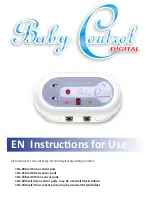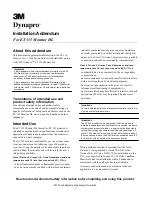
1st Edition June 1989
2nd Printing, February 1990
The information in this document is subject to change without notice and should not
be construed as a commitment by Digital Equipment Corporation. Digital Equipment
Corporation assumes no responsibility for any errors that may appear in this document.
The software described in this document is furnished under a license and may be used or
copied only in accordance with the terms of such license.
No responsibility is assumed for the use or reliability of software on equipment that is not
supplied by Digital Equipment Corporation or its affiliated companies.
Restricted Rights: Use, duplication, or disclosure by the U. S. Government is subject to
restrictions as set forth in subparagraph ( c ) ( 1 ) ( ii ) of the Rights in Technical Data and
Computer Software clause at DFARS 252.227–7013.
Copyright © Digital Equipment Corporation February, 1990
All Rights Reserved.
Printed in U.S.A.
FCC NOTICE:
The equipment described in this manual has been certified to comply
with the limits for a Class B computing device, pursuant to Subpart J of Part 15 of FCC
Rules. Only peripherals (computer input/output devices, terminals, printers, etcetera)
certified to comply with the Class B limits may be attached to this computer. Operation
with noncertified peripherals may result in interference to radio and television reception.
This equipment generates and uses radio frequency energy and if not installed and used
properly, that is, in strict accordance with the manufacturer’s instructions, may cause
interference to radio and television reception. It has been type tested and found to comply
with the limits for a Class B computing device in accordance with the specifications in
Subpart J of Part 15 of FCC Rules, which are designed to provide reasonable protection
against such interference in a residential installation. However, there is no guarantee
that interference will not occur in a particular installation. If this equipment does cause
interference to radio or television reception, which can be determined by turning the
equipment off and on, the user is encouraged to try to correct the interference by one or
more of the following measures:
–
Reorient the receiving antenna.
–
Move the computer away from the receiver.
–
Plug the computer into a different outlet so that computer and receiver are on
different branch circuits.
If necessary, the user should consult the dealer or an experienced radio/television
technician for additional suggestions. The user may find the following booklet prepared by
the Federal Communications Commission helpful:
How to Identify and Resolve Radio-TV
Interference Problems
. This booklet is available from the US Government Printing Office,
Washington, DC 20402, Stock No. 004–000–00398–5





































